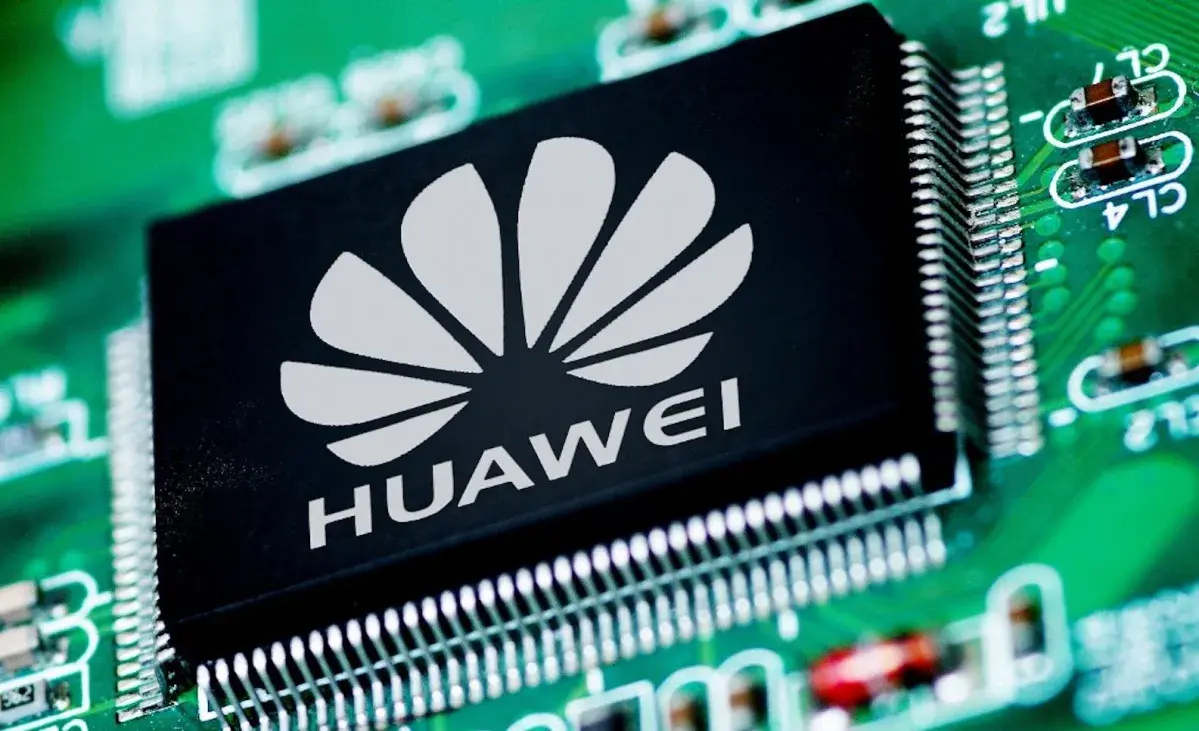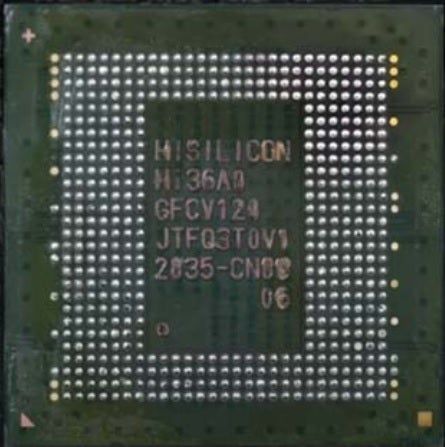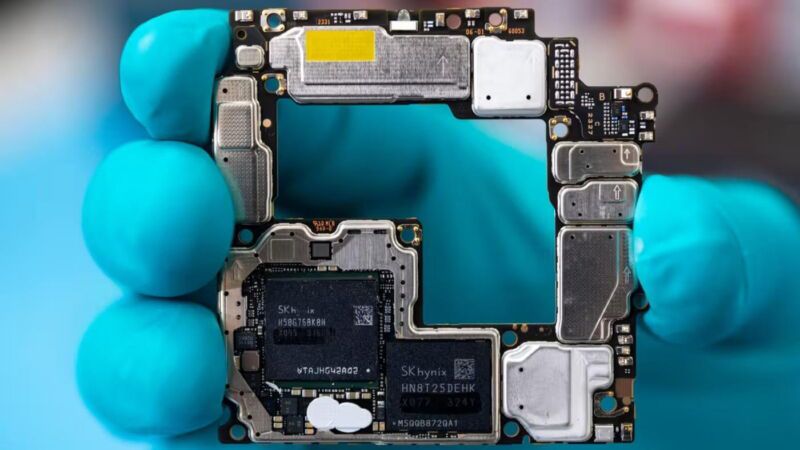Highlights
- SMIC set to start mass production of 5nm chips for Huawei, defying US sanctions.
- Project marks significant push for China’s semiconductor self-reliance and innovation.
- Utilizes DUV lithography, with expected yields of 30-40% for 5nm chips.
- Prices for SMIC’s 5nm and 7nm chips are 40-50% higher than TSMC’s.
China’s Semiconductor Manufacturing International Corp (SMIC), the nation’s premier chipmaker, is set to commence mass production of 5-nanometer (nm) chips for Huawei later this year.
This development comes amid the backdrop of stringent US chip export restrictions and represents a significant milestone for Chinese tech firms in their pursuit of semiconductor independence and innovation.
Navigating Challenges: High Costs and Political Will

The report by the Financial Times says that the decision by Huawei and SMIC to embark on the production of 5nm chips, despite facing significant hurdles such as low production yields and elevated costs, is a way for Huawei to come to the forefront of technological breakthroughs, as it did so often before being on the US Balcklist.
As such, the project, which is expected to entail considerable financial investment, is reportedly seen as a statement of political defiance against international sanctions, particularly the US chip export ban.

Experts have highlighted the technical feasibility of using immersion deep-ultraviolet (DUV) lithography for the fabrication of 5nm chips, albeit at a cost significantly higher than the more advanced extreme-ultraviolet (EUV) lithography.
Despite the cost implications, SMIC plans to leverage its existing equipment to produce these advanced chips, with expectations of achieving yields of 30-40% for 5nm chips.
This move is priced at a premium, with SMIC’s 5nm and 7nm offerings marked up by 40-50% over those of Taiwan Semiconductor Manufacturing Co (TSMC), a global leader in the semiconductor industry.
A Leap Toward Self-Reliance

The initiative is part of a broader “whole-nation” strategy embraced by Beijing to fortify its semiconductor industry amidst international trade tensions and supply chain vulnerabilities.
As per reports, this push towards self-reliance has been echoed by Chinese President Xi Jinping, who has called upon local engineers and technicians to drive the nation towards greater independence and strength in science and technology.

FAQs
What is the significance of SMIC producing 5nm chips for Huawei?
This move signifies China’s commitment to advancing its semiconductor technology and reducing dependence on foreign tech, despite facing international sanctions and the US chip export ban.
Why are the production costs and prices of SMIC’s 5nm chips higher?
The higher costs and prices are attributed to the use of DUV lithography, which is technically feasible but more expensive than EUV lithography, leading to lower yields and higher production costs.
How does the SMIC 5nm chip production align with China’s broader goals?
The production is part of China’s “whole-nation” strategy to bolster its semiconductor industry, aiming for technological self-reliance and innovation amid global trade tensions.
What challenges does SMIC face in producing 5nm chips?
SMIC faces challenges such as achieving lower yields and dealing with high production costs, which are significant hurdles in the mass production of 5nm chips.
What is unique about the Kirin 9010 chipset in Huawei’s P70 series?
The Kirin 9010, potentially used in Huawei’s P70 series, is rumored to be a cutting-edge 3nm chip.
This development represents a significant technological leap, offering enhanced performance and efficiency over its predecessors.
Will the Huawei P70 series support 5G connectivity?
Yes, Huawei is reportedly planning to bring back 5G connectivity in its upcoming P70 series.
This addition will mark a significant upgrade, ensuring the smartphones meet current high-speed internet standards.
What camera features are expected in the Huawei P70 series?
The Huawei P70 series, particularly the P70 Art model, is rumored to have an ultra-wide camera with a 1-inch type sensor and a superior 1G6P lens.
This advancement suggests a notable improvement in image quality and camera performance.
Has Huawei faced challenges in developing the Kirin 9010 chipset?
Huawei’s development of the Kirin 9010 chipset has been hindered by trade restrictions and a challenging business environment.
Initially planned for production in 2022, the project was delayed but now appears to be back on track.
What is unique about the Huawei P70’s camera?
The Huawei P70 series is set to revolutionize smartphone photography with a 1-inch sensor in its ultra-wide camera.
This larger sensor size is expected to significantly improve image quality, particularly in low-light conditions, a feature not commonly seen in smartphones.
How does the Huawei P70 series compare in sales projections to its predecessor?
With its advanced camera technology, the Huawei P70 series is projected to see a substantial sales increase of 100-120% compared to the Huawei P60 series, indicating strong market anticipation and consumer interest.
What processing power can be expected in the Huawei P70 series?
There is speculation that the Huawei P70 series might be equipped with the Kirin 9000s processor, a 7nm chip that enhances performance and supports 5G connectivity, promising a powerful and efficient user experience.
How does the 1G6P lens technology benefit the Huawei P70’s camera?
The 1G6P lens, meaning one glass and six plastic elements, in the Huawei P70’s ultra-wide camera, is designed to enhance image clarity and reduce distortions, making it a significant advancement in lens technology for smartphones.
What does the leaked 3D render suggest about the new Huawei device?
The 3D render indicates a Huawei smartphone that mirrors the design of the Nova 11, yet it showcases potential advancements.
The modified camera module and new alignment of the lenses imply significant enhancements in camera technology, possibly setting a new standard for Huawei’s imaging capabilities.
How does the device’s design stand out?
The side profile of this mysterious Huawei device features a trio of buttons, including a distinctive red-accented power button.
This design choice, combined with rounded corners and a less pronounced curvature, suggests a focus on ergonomic and user-friendly design, catering to a seamless user experience.
What is Xmage, and how does it relate to this Huawei device?
Xmage is reportedly Huawei’s new photography system, developed following their separation from Leica.
This system signifies Huawei’s shift towards in-house imaging technology, potentially offering innovative photographic features and capabilities that could differentiate this device in the competitive smartphone market.
Also Read: Huawei Planning for Surpirse IPO in 2024; Could Surpass Apple’s 2019 Valuation
Also Read: Huawei P70 Series Rumoured To Come with a Massive 1-Inch Sensor
Also Read: Huawei P70 Series Set to Launch with Brand new Kirin 9010 Chipset
